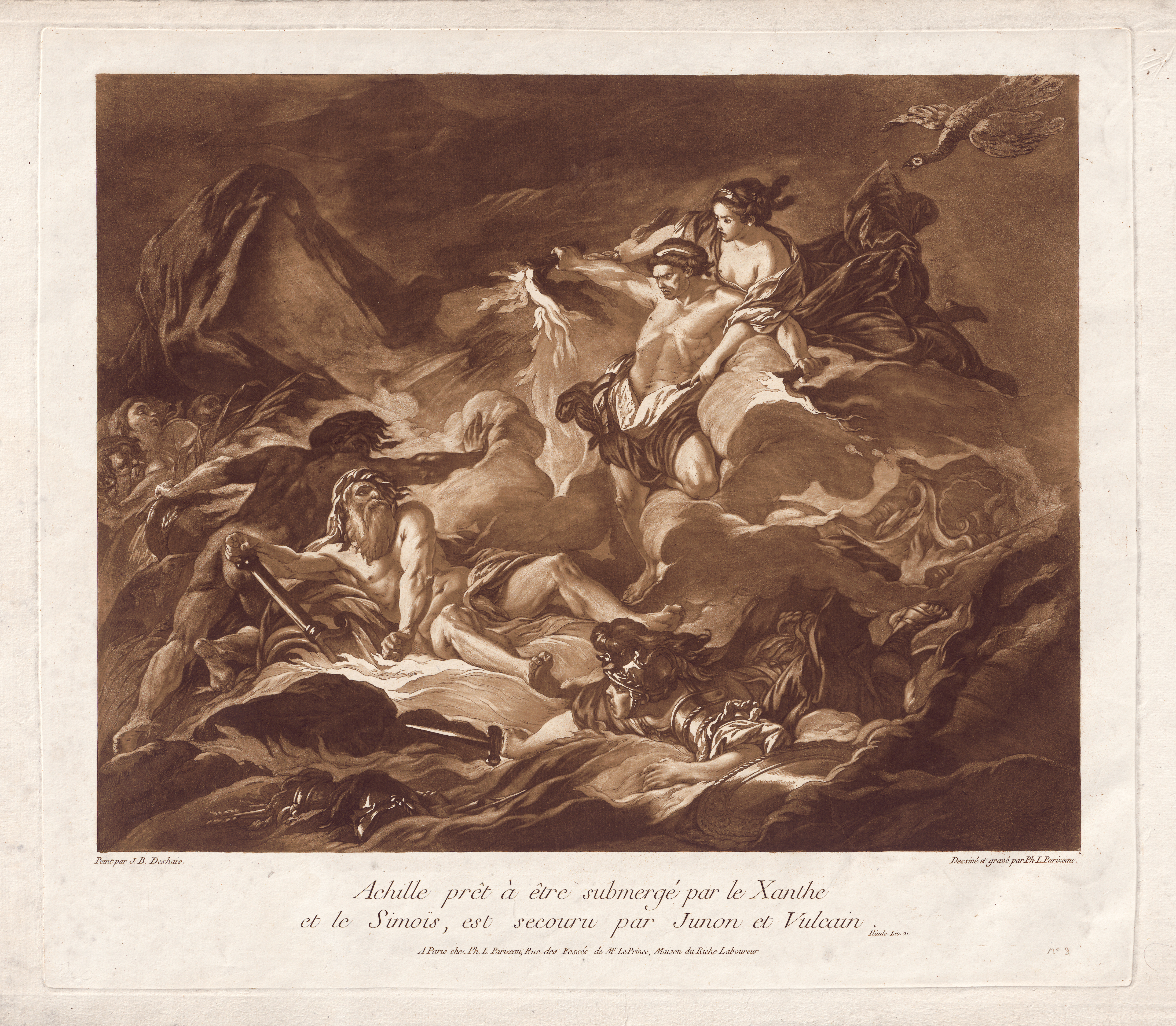Loading the page ...
Philippe Louis Parizeau
(1740–1801, Paris)
Juno and Vulcan Save Achilles from the River Gods Xanthos and Simoeis. Lavis-manner etching, printed in brown ink. 46.5 x 52.5 cm. (1770). Portalis-Béraldi, vol. III, p. 271; Le Blanc 132; Nagler 7.
Born in Paris, Philippe Louis Parizeau excelled above all as a draughtsman and engraver. He was apprenticed to Johann Georg Wille from 1766, but the discipline and laborious working methods involved in engraving did not suit his artistic bent. Portalis and Béraldi note in this context in their brief biography of the artist: “Mais bientôt, ne se sentant pas la patience de se plier à la lenteur du burin, il (Parizeau) se contenta de faire des dessins rehaussés, un peu de peinture et surtout de graver à l’eau-forte ou au lavis”.
Parizeau evidently soon acquired considerable mastery of the lavis manner, as is evidenced by this extremely turbulent, masterfully treated composition. He based his etching on a painting by the history painter, Jean-Baptiste Henri Deshayes, François Boucher’s son-in-law, which dealt with a mythological subject from the Trojan War. The scene taken from Book 21 of the Iliad shows how Vulcan and Juno save Achilles from drowning by using flames to vanquish the river gods Xanthos and Simoeis, who had allied themselves with the Trojans. The scene is invigorated by a stirring visual narrative. A howling wind whips up the waves, and the two river gods labour in vain against the superiority of their opponents. In the foreground Achilles, in full armour, is swept away by the floods and thus escapes the deadly danger. Parizeau’s subtle lavis technique with its masterful, velvety transitions and effective chiaroscuro reproduces brilliantly the baroque tumult of the original. A superb, contrasting impression, with full margins. Minor ageing and blemishes in the margins, otherwise in excellent, untreated condition.
Contact us for further information